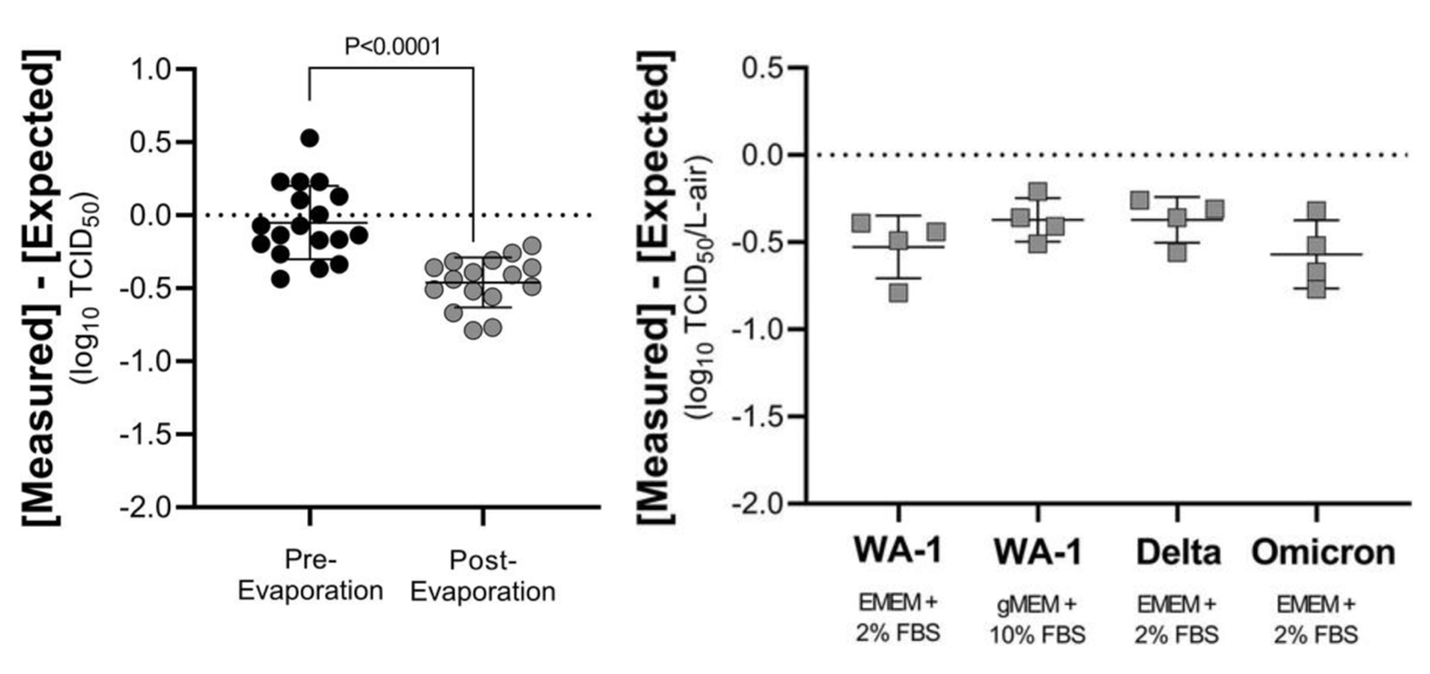By: Justice Archer
P.A. Dabisch, S.P. Wood, B.P. Holland, J. A. Boydston, K. E. Beck, B. Green, and J. Biryukov
Aerosol Science and Technology, 56:12, 1146-1155, DOI: 10.1080/02786826.2022.2128712
Viruses like SARS-CoV-2, the virus that causes COVID-19, are changing constantly. Some changes may affect the virus’s properties, such as how easily it spreads, the associated disease severity, subsequently affecting the public health and social measures. A number of prominent variants have been seen since the beginning of the pandemic, and studies have found that these variants in aerosols can be inactivated and lose their infectivity under typical indoor or outdoor environmental conditions after being released. A study by Dabisch et al. investigated the impact of rapid evaporation of aerosol water on the losses of infectivity of different isolates of SARS-CoV-2, including isolates from the more recent Delta and Omicron variants. Testing was performed with a flowing chamber, where the infectious SARS-CoV-2 isolates were aerosolized and actively sampled onto PTFE filters under low relative humidity (RH) levels. By excluding the virus inactivation caused during aerosol generation, the study demonstrated that a significant fraction of infectious SARS-CoV-2 was inactivated following aerosol evaporation at low RH, and that the infectivity loss was similar for different tested variants. The findings suggest that it is unlikely that an increase in environmental stability contributes to the increases in transmissibility observed with more recent variants of SARS-CoV-2, and highlight the need to explore additional potential factors that could increase the transmissibility, such as differences in virus shedding from infected individuals and/or differences in the infectious dose of inhaled virus.

This Issue’s Newsletter Committee:
Editor | Krystal Pollitt, Yale UniversitySenior Assistant Editor | Justice Archer, University of BristolJunior Assistant Editor | Dong Gao, Yale UniversityGuest Contributor | Sarah Petters, Aarhus University